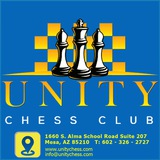17...Be6 may also be good, but this allows 18.Qb5!? when after 18...Qxb5?! 19.axb5 Nc5 20.e5 the b5-pawn is not as weak as it was on a4 and the black queenside pawns are exposed.
Now it’s done. By this precise move Smyslov stabilizes his great advantage.
Keeping the e5-pawn is important in order to resist. This mistake ends the game.
The a4-pawn is in a very bad way and this is on top of the material deficit, so White chose to resign.
Unity Chess Club
Luis Piazzini Carlos Guimard Necochea ch-ARG m 1938 Black to move
White has just played 30.h4? with the likely intention of continuing 31.g5 when he would gain a large space advantage and lasting pressure. This involves calculating a simple variation that gains an exchange for a pawn and evaluating the resulting position.
White has an exposed king, his rooks lack prospects and he has weak pawns on e3 and h4, or elsewhere in case of a modification of the structure. The black knight has excellent squares on e4 and f5 and the g4-pawn is annoying. Without calculating anything we can see that White cannot be better and is probably much worse. Thus, to have played 30.h4 in a superior position was a big strategic mistake.
Threatening a check on e4. 37...Ne4+? immediately is no good because of 38.Rxe4.
Unity Chess Club
Isaac Kashdan Israel-Albert Horowitz New York ch-USA m 1938 White to move
White has active pieces and a four vs three pawn majority on the kingside (the e3-pawn is neutralized by the d5-pawn and is not included). His main plan is to advance his f-pawn to gain space and improve the f1-rook’s prospects. The g3- bishop defends the e5-pawn, which will allow White to carry out the f4-f5 thrust without losing it, and if f5-f6 is also possible then the black king’s pawn cover would be decisively damaged. Black does not have an active plan available to him at the moment and will strive to block the white f-pawn.
A very strong move that provokes a weakening of the black kingside before opening the position.
